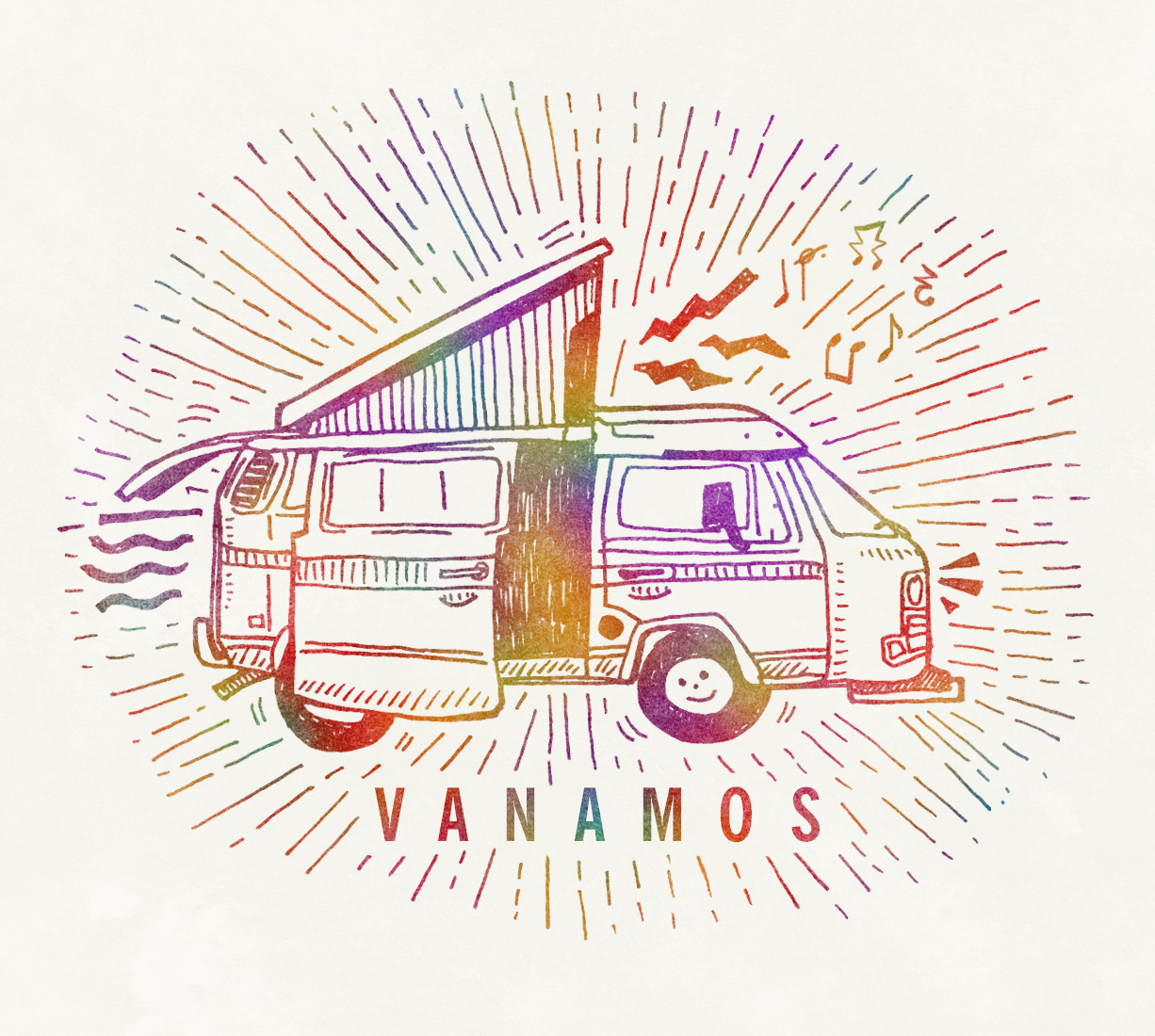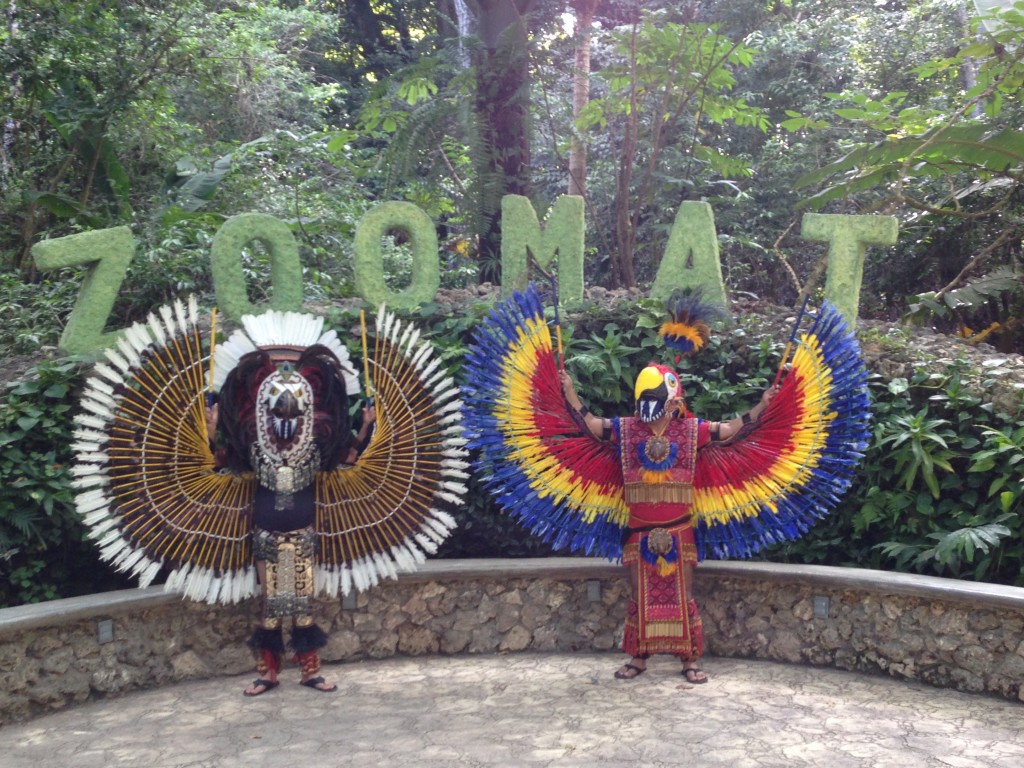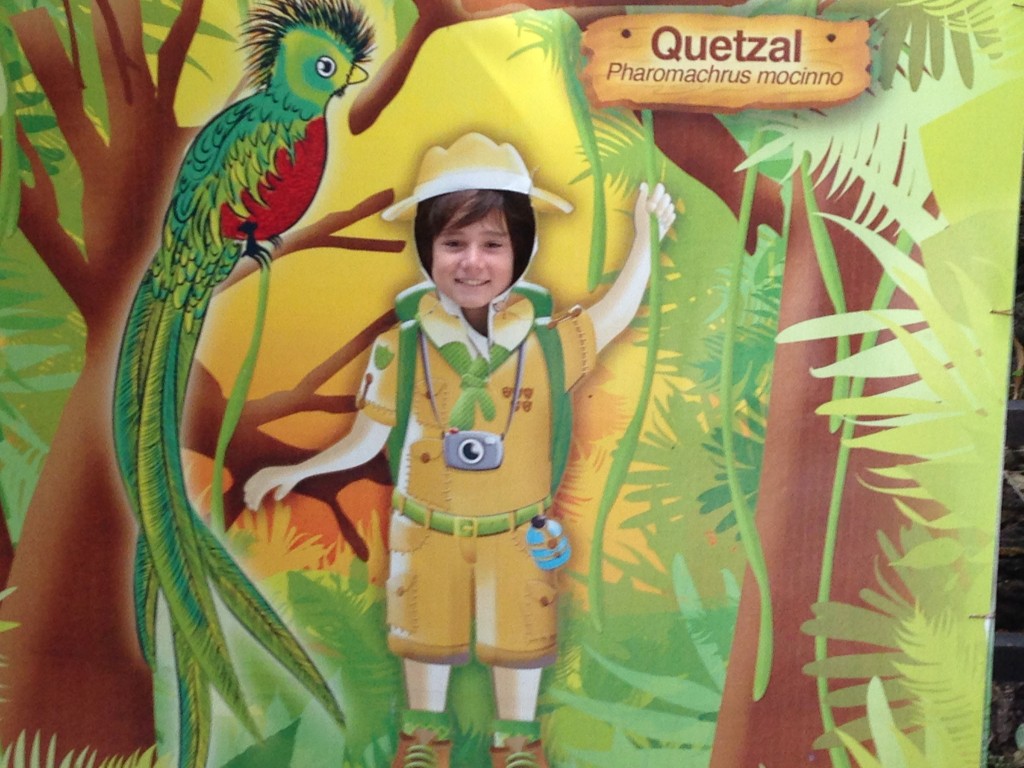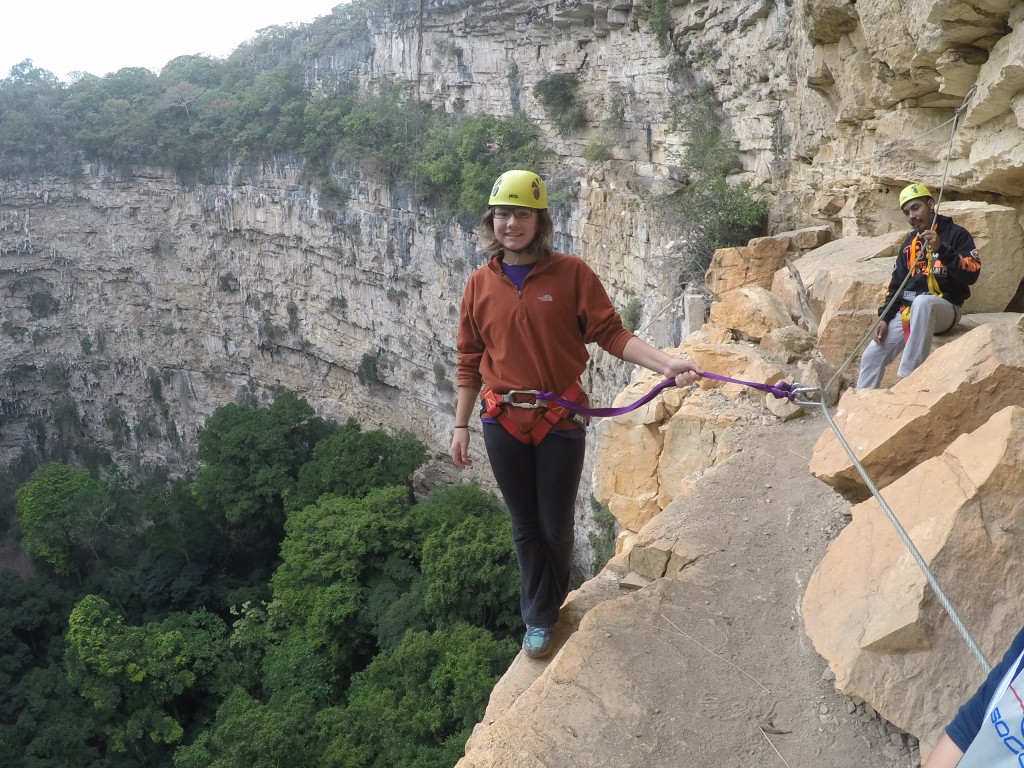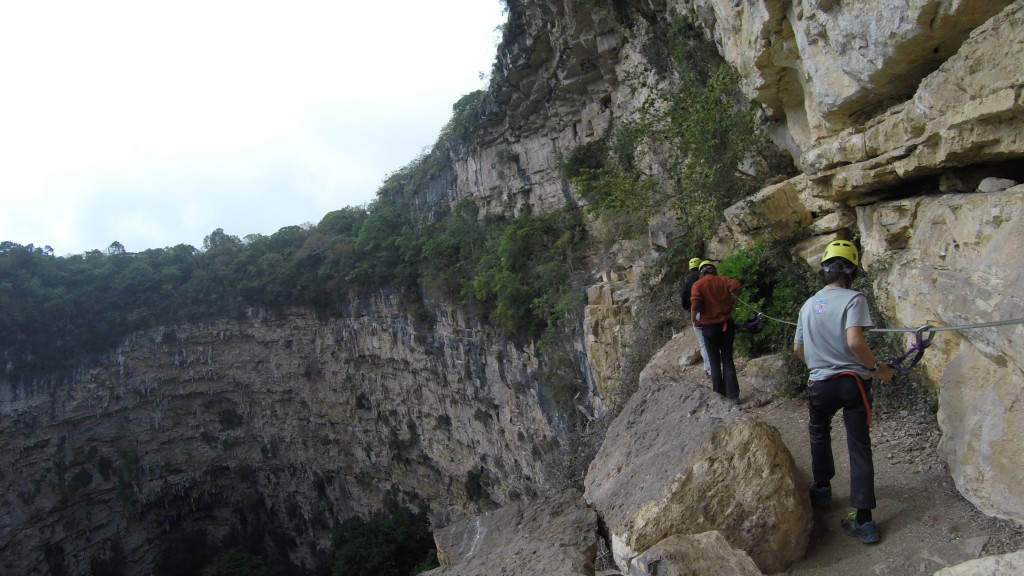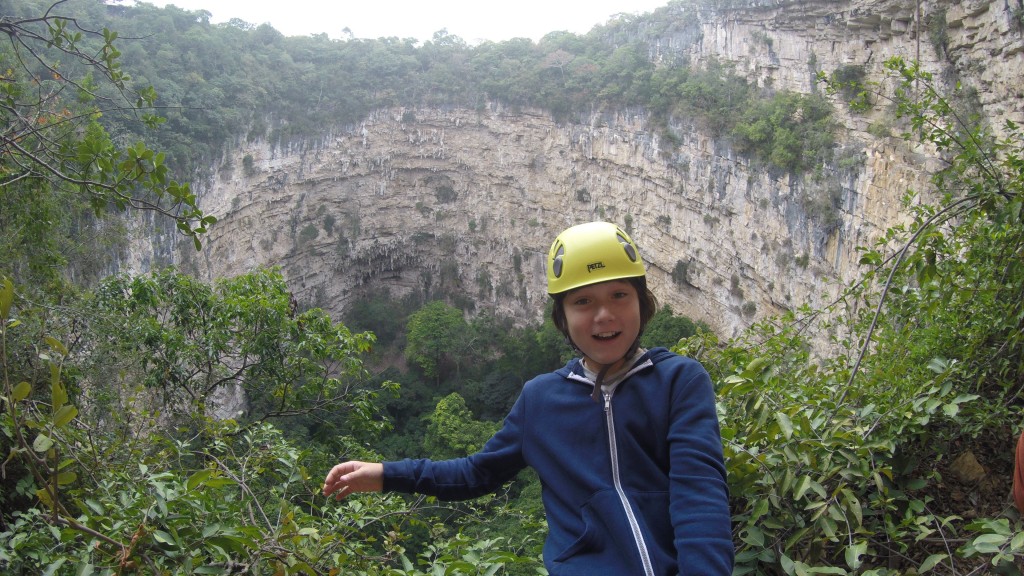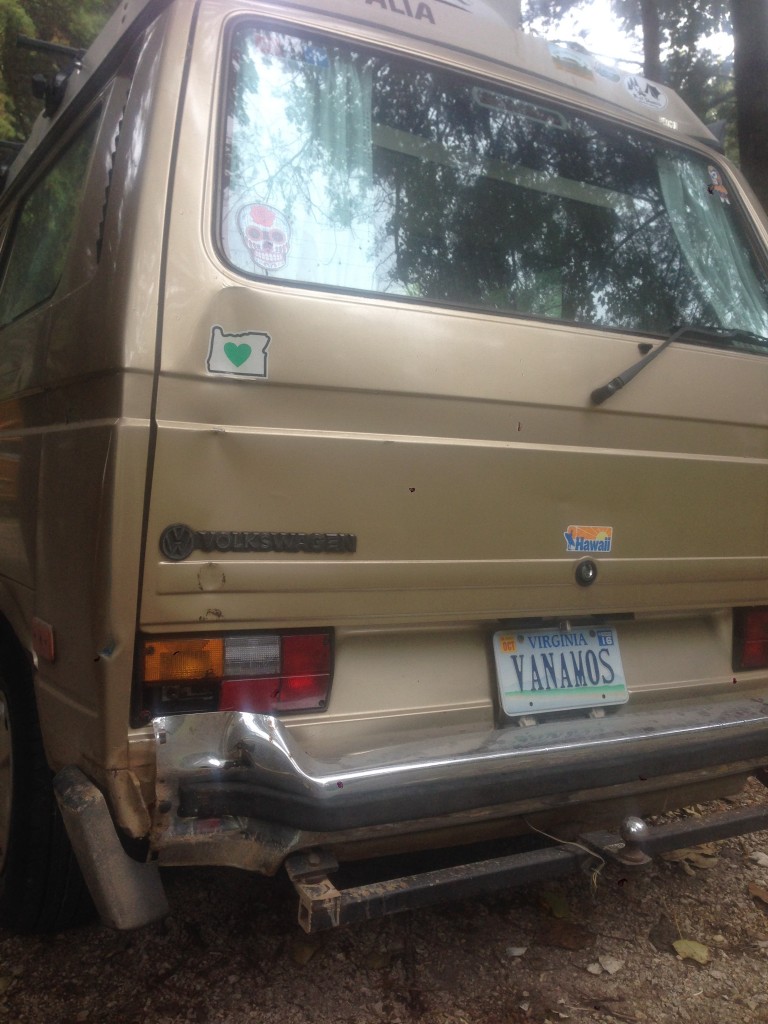Since Mexico gained independence from Spain in the early 1800’s it has survived several invasions by other countries, including the United States in the Mexican-American War, and internal uprisings due to bad government that has caused it to change heads of state more often than the wind changes direction. Many of these civil wars were instigated by indigenous peoples seeking equal rights, particularly with respect to land holdings. In fact, as recently as the 1990’s, a rebel group called the Zapatistas engaged in an armed insurgency as a means to bring about social reforms for indigenous peoples in Chiapas state, where Wesley is currently parked. In some cases these uprisings bring about social reforms that redistribute land ownership to ejidos - community land holdings - for local groups native to the region. On Saturday night, we arrived at Sima de las Cotorras, an ejido of the Tzamanguimo people - who must be ancestral to Chiapas.
The Sima is an enormous sink hole in the ground, dating from who knows when, and its recent claim to fame is that it is home to several hundred green parrots which spew forth from the ground like feathery lava each morning and seep back at dusk, but only during the months from April to October. In December, the parrots are sunning themselves in warmer climates; but nobody told us this, so we bounced our way over 12 kilometers of rocks and mud to camp in the rain and cold. No matter, because the chances that we were going to be able to wake at dawn and hike the few meters to the sink hole to see the birds as they greet the day was really quite slim. Instead of seeing birds, we justified our visit to the Sima by taking a stroll around the perimeter of the interior of the hole on what we called a “danger walk”.
Being on the ejido, and witnessing what the folks have done with their opportunity to own land - nicely maintained grounds, well-built and kept cabanas, good restaurant, something to keep their children home and to take pride in - led to a Vanamos breakfast conversation comparing Native Americans with Mexican indigenous peoples.
Now, I’m just a guy with too much time on his hands, so none of what follows should be taken as gospel, but just some general reading I’ve done has learned me that before the Spaniards conquered what they came to call Nueva Espana, the native tribes like the Aztec and Maya had settled in great cities and when they warred with neighboring cities, they sacrificed the captured warriors by cutting out their hearts, or chopping off their heads. Native Americans, like the Lenni Lenape and the Apache, did not build cities but generally moved around the plains or forests depending on the season. If they got into a disagreement with a neighboring tribe, they organized a raiding party and, under cover of night, stole some of the other tribes’ horses. Comparatively, this is the equivalent of bullying the other tribe for its lunch money.
When the Spaniards came to Mexico they were viewed as bearded gods and were thrown great feasts and given women as concubines. Then they conquered and enslaved the men and took their land and its riches. When the first settlers came to America, they wore white socks pulled up to their knees and patent leather shoes. They tried to befriend the Indians because they needed their help to understand which crops to grow or else they would die. If the Indians were unfriendly, the settlers lived inside forts that they built out of sticks, just like the second little pig.
When the Mexican Indians got fed up with the Spanish Imperialists, a priest led them in revolt and they kicked them out, but this didn’t work out any better because the Church came into possession of the land. In the 1850’s, the Zapotepec politician Benito Juarez, one of the unsullied heroes of Mexican history, passed reform laws that required the Church to sell the land, but this didn’t work out any better for the natives because most of the land was purchased by rich people - not by historically oppressed peoples - and the rich people continued to exploit the natives and combat further reforms that would improve the natives’ station. This has continued to create unrest, and as recently as 1910-1920, Mexico was still engaged in widespread civil war to redistribute hacienda land to the natives. The natives haven’t owned their ancestral lands since the 1400’s and basically, they are pissed off about it. Occasionally, they get thrown a bone in the form of an ejido and it’s nice to see them take hold of the chance to preserve it in a way that the Tzamanguimo have done with the Sima.
On the other hand, as the American settlers became more comfortable with the land, and imported more guns and people, they pushed the Native Americans further and further west, signing treaties along the way that promised the Indians several shiny necklaces and a lifetime supply of alcohol. Eventually, the New Americans got tired of that game and created reservations in god forsaken places like Oklahoma where they forced the Native Americans to live with no economic options but to sell tax-free cigarettes and build casinos.
Well, it was an interesting conversation that we had, and Coconut even asked some questions about why Indians build casinos that reminded me of a very good book that I read called “Revenge of the Pequots” which details the history of Indian gaming starting from the Seminoles’ bingo parlors and the State of Florida’s unsuccessful efforts to tax the profits. The Pequots are a Native American tribe from Connecticut that was forced to open Foxwoods Casino and book multi-million dollar acts like Keith Urban and Nickelback, which is why you have probably never heard of them, but other tribes have heard of them which is why they all want to open casinos and get rich too.
Anyway, after our danger walk and lunch, we got in Wesley and drove a couple of hundred kilometers south and 1,940 meters up into the clouds, literally, to San Cristobal de las Casas, a colonial city in a valley surrounded by a pine forest. We planned to be here only a day or two before heading north to Palenque, but while we were waiting to pull into the campground Rancho San Nicolas, I got it into my mind that I would back up in case anyone coming out of the gate wanted to pass and I ended up kissing a telephone pole that someone had decided to plant two feet from the curb in the road. It did serious damage to the rear fender and dented the rear hatch so much that it won’t open. I also broke a taillight. What all this means is that we are going to be sitting in San Cristobal for a few days while Wesley gets repaired.
